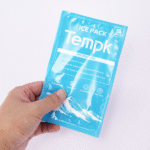Dry Ice Packs for Overnight Shipping: Best Practices and Solutions
Shipping perishable items requires precise temperature control to ensure product integrity. Dry ice packs for overnight shipping are a proven method to maintain the necessary low temperatures, keeping items frozen and safe for the duration of transit. By understanding the benefits and best practices of using dry ice, you can optimize your shipping processes and ensure the timely arrival of temperature-sensitive goods.
-
What are the benefits of using dry ice packs for overnight shipping?
-
How can you ensure your perishable goods stay cold during transit?
-
Are there any safety precautions to follow when shipping with dry ice?
-
How can you optimize dry ice usage for overnight shipments?
What Are the Benefits of Using Dry Ice Packs for Overnight Shipping?
Dry ice is a versatile and highly effective solution for maintaining subzero temperatures during overnight shipments. It provides a much colder environment compared to traditional ice, maintaining temperatures as low as -78.5°C (-109.3°F). Whether you’re shipping frozen food, pharmaceuticals, or biological samples, dry ice packs are ideal for ensuring items remain in a frozen state for extended periods, even during overnight transit.
Why Dry Ice is Ideal for Overnight Shipping
-
Extended Cold Retention: Dry ice keeps items frozen for much longer than gel packs or regular ice, making it perfect for short, yet critical, overnight shipments.
-
No Water Damage: Unlike traditional ice that melts into liquid, dry ice sublimates directly into carbon dioxide gas, eliminating the risk of water damage to sensitive items like vaccines or frozen foods.
-
Sublimation Process: As dry ice sublimates (changes from solid to gas), it maintains its cooling power without creating any moisture, which is particularly advantageous for moisture-sensitive products.
| Feature | Dry Ice Packs | Traditional Ice Packs |
|---|---|---|
| Temperature | -78.5°C (-109.3°F) | 0°C (32°F) |
| Cooling Duration | 24-48 hours | 4-12 hours |
| Risk of Water Damage | None | High |
Best Practices for Shipping with Dry Ice Packs Overnight
1. Calculate the Correct Amount of Dry Ice
For overnight shipments, you will need 1–2 pounds of dry ice per 24 hours of transit. However, if the shipping duration is extended, or if you’re shipping over a longer distance, you may need to adjust the quantity. Monitoring transit times will help you optimize dry ice usage to avoid wastage or insufficient cooling.
2. Use Proper Packaging
To maximize the effectiveness of dry ice, it’s crucial to choose the right packaging. Insulated containers are ideal for keeping dry ice from sublimating too quickly. Materials such as cooler bags and thermal blankets are excellent options for protecting your goods. Pack your items properly with dry ice placed at the bottom of the container, creating a stable cold environment.
3. Seal the Package Correctly
Sealing your shipment is crucial for maintaining the cold chain. Use airtight containers with ventilation holes to allow carbon dioxide gas to escape. This ensures that pressure doesn’t build up inside the package, which could cause the container to rupture.
Are There Any Safety Precautions to Follow When Shipping with Dry Ice?
While dry ice is an effective cooling agent, it requires proper handling to ensure safety during transit. Here are the key safety measures to follow:
1. Wear Insulated Gloves
Handling dry ice can be hazardous due to its extremely low temperature. Always wear insulated gloves to prevent frostbite when handling dry ice during the packing process.
2. Ventilate the Package Properly
Dry ice sublimates into carbon dioxide gas, which can displace oxygen in confined spaces. Ventilated packaging is crucial to allow the gas to escape and prevent pressure buildup. Never ship dry ice in sealed containers without proper ventilation.
3. Label the Package Correctly
Proper labeling is essential for safe shipping. The package should clearly display a “Dry Ice” label along with handling instructions. Compliance with IATA and DOT regulations ensures safe transit, especially for hazardous materials.
Optimizing Dry Ice Usage for Overnight Shipments
1. Pre-cool Containers and Goods
To ensure that your shipments stay colder for longer, pre-chill both your containers and the items being shipped. This helps reduce the load on the dry ice and minimizes the amount needed to maintain the desired temperature.
2. Group Items by Temperature Sensitivity
When shipping multiple products, group similar items together that require the same temperature range. This reduces the amount of dry ice needed and ensures efficient use of your resources.
3. Real-time Temperature Monitoring
Using temperature monitoring devices can provide valuable insights into the conditions of your shipments during transit. These devices help you ensure the cold chain is maintained, and allow you to make adjustments if needed.
2025 Trends in Dry Ice Shipping for Overnight Deliveries
With the increasing demand for overnight shipping, cold chain logistics is evolving rapidly. New technologies and materials are shaping the future of dry ice shipping, enhancing its efficiency and reducing its environmental footprint.
Latest Developments
-
Smart Packaging: The integration of temperature sensors and smart labels into packaging is revolutionizing dry ice shipping by providing real-time updates on shipment conditions.
-
Eco-friendly Insulation: Advances in sustainable insulation materials help reduce the environmental impact of shipping while improving thermal performance.
Market Insights
As the cold chain logistics industry continues to grow, businesses are focused on improving shipping times and reducing waste. 40% of logistics companies have reported increased customer satisfaction thanks to faster and more reliable overnight shipping services.
Frequently Asked Questions
Q1: How long does dry ice last for overnight shipping?
Dry ice typically lasts 24-48 hours, depending on the amount used and the quality of insulation. For shorter shipments (24 hours), 5–10 pounds of dry ice are usually sufficient.
Q2: Can dry ice be used for shipping electronics?
While dry ice can be used to ship electronics, care must be taken to ensure that it does not come into direct contact with sensitive components. Always use proper insulation to protect the electronics.
Conclusion and Recommendations
Using dry ice packs for overnight shipping offers a reliable and effective solution for preserving perishable goods during transit. By following best practices, calculating the correct amount of dry ice, and adhering to safety guidelines, you can ensure that your shipments arrive safely and in excellent condition.
Action Suggestion: If you’re considering shipping with dry ice, consult with a logistics expert to determine the appropriate dry ice quantity and packaging for your specific needs.
About Tempk
At Tempk, we specialize in providing innovative cold chain solutions, including high-quality dry ice packs for overnight shipping. With our expertise, we ensure that your temperature-sensitive products are securely transported. From pharmaceuticals to frozen food, our tailored solutions meet your logistics needs with efficiency and reliability.
Call to Action: Contact Tempk for expert advice on optimizing your cold chain logistics and shipping strategies.
























